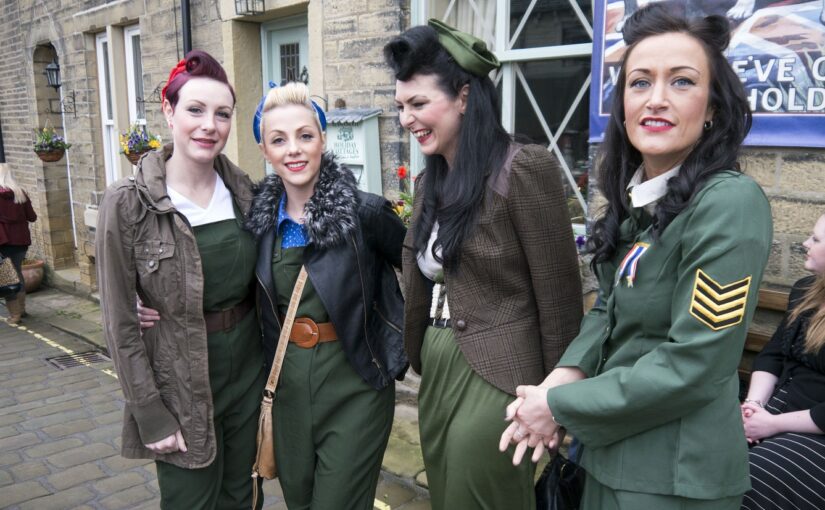If you’ve been watching the excellent BBC documentary series ‘A House Through Time’, presented by David Olusoga and co-written by Melanie Backe-Hansen, you’ll know that this series centres upon a house in Leeds. In today’s post let’s take a look at a timeless village just 17 miles west of Headingley: Haworth. This weekend marks the ever exuberant and popular 1940s weekend (a picture from a recent one, courtesy of Wikimedia, adorns the top of this page), so let’s dip into the archives to see just what was really occurring in 1940s Haworth. As you might expect, there are Brontë connections.
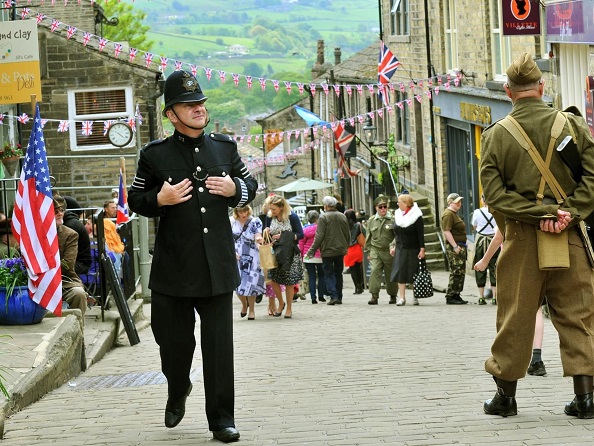
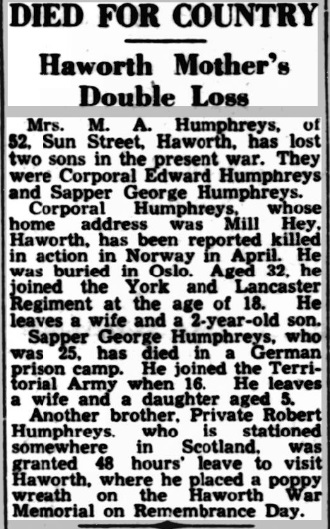
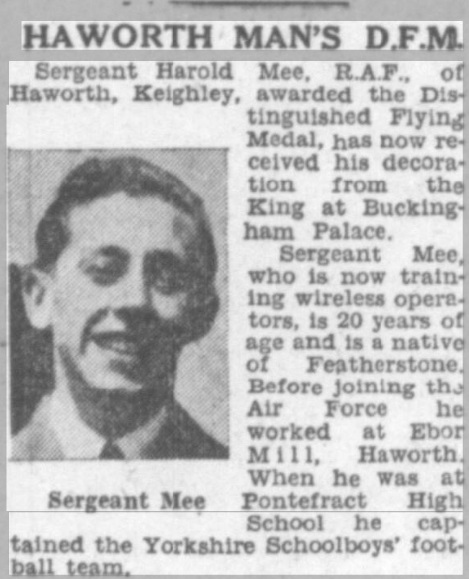
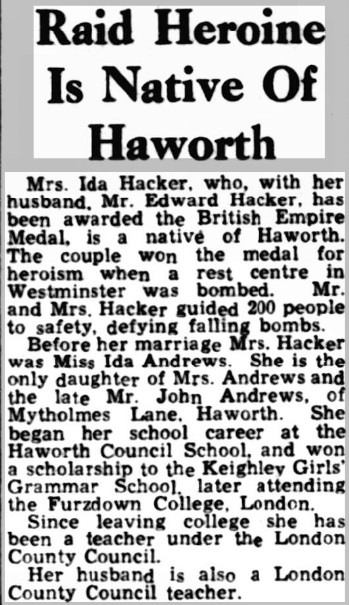
Bradford Observer, 15th January 1942
‘Haworth, most famous of Yorkshire villages, was “on the air” last night. Few listeners in the country would hear the broadcast, but it would be heard by many thousands in Africa, to whom it was specially sent out in the overseas programme. For 15 minutes Yorkshiremen out there would feel themselves back at home as they heard from villagers how Haworth is carrying on.
As written by Graham Banks, the programme had little war atmosphere about it. Haworth is playing its part in the war effort, but it is also maintaining its old traditions, and it was the spirit of the Haworth they knew which Mr. Banks tried to recapture for Yorkshire listeners beyond the seas.
Mr. Charlie Wildman, who has 62 years’ experience in choir work in the district, and who, at 73, still sings tenor and conducts a choir, told the listeners there had been three performances of “Messiah” in Haworth that Christmas, and produced a tit-bit when he asked the Mill Hey Methodist Choir to sing Haworth’s own Christmas anthem. It is known as “Joa o Peggy’s Anthem” – so named after its composer, Joseph Redmond, who was Parish Clerk in the days of the Rev. Patrick Brontë…
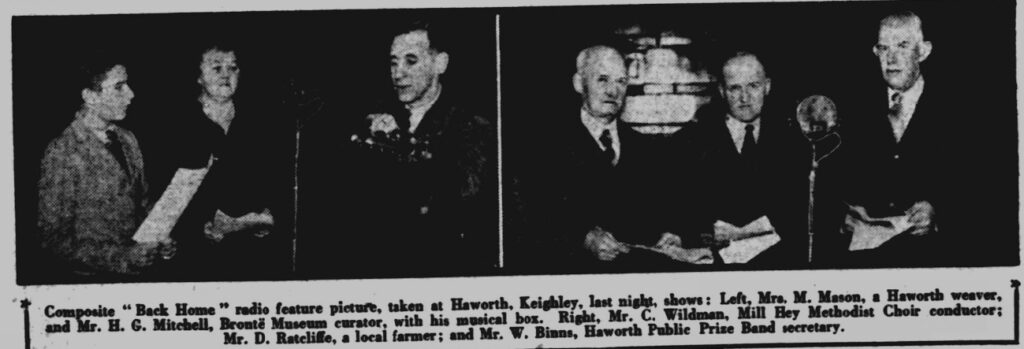
I chatted with Mrs. Mathilde Mason, aged 67, who for 50 years has been weaving at the same mill. She is the kind of woman whom Yorkshire people like to think of as typical of their county. She was waiting to be called to the microphone for a rehearsal with the producer, Nan Macdonald, and I asked her if she was nervous.
“Well, I am, rayther, but Ah’ll be all reight when Ah get going,” she replied. I tried to convince her of my belief that she would be one of the hits of the broadcast .
“It’s funny,” she told me, “T’first time Ah ivver did owt like this was in this varry schoolroom. Ah gave a bit of a reading because Ah couldn’t memorise, but Ah knew who was listening then.”
“This programme is being recorded and will be sent to most of our Colonies,” I told her.
“Well, Ah hope it gets to Australia,” she answered, “Ah’ve some friends out there who heard me give yon reading, an’ they’ll be capped.”’
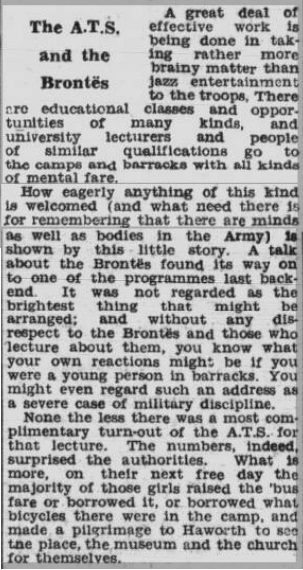

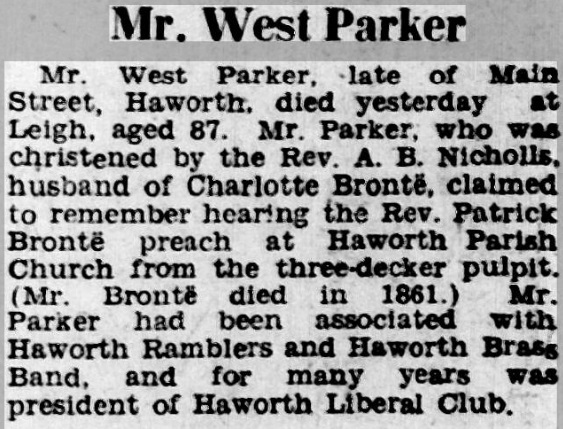
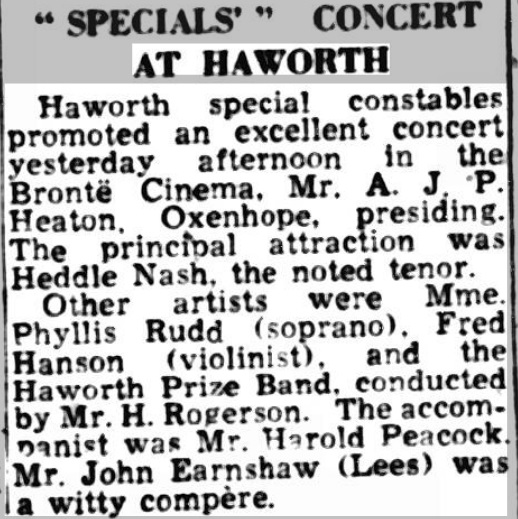
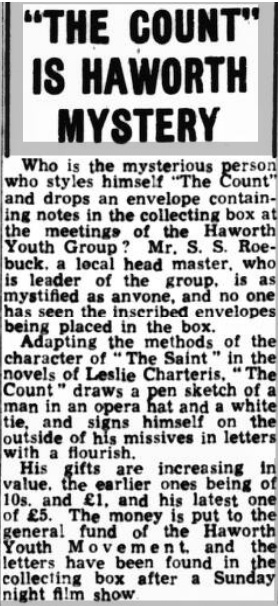
Yorkshire Post, 19th August 1944
‘Canadians At Haworth – Museum And Church Visited: A party of 40 Canadian Servicemen attending the “Life in a Northern Shire” course at Leeds University yesterday visited Haworth, where they spent some time looking round the Brontë Parsonage Museum, which on an average attracts 14,000 to 16,000 visitors a year. They also inspected the church and had a glimpse of the neighbouring moors.
They travelled by bus from Leeds and were accompanied by Mr. W. R. Grist (secretary of the Leeds Regional Committee for Adult Education in the Forces) and Mrs. Grist. Mr. and Mrs. J. P. Major-Stevenson, and Messrs. Berlyn and J. B. Henning (of the Canadian Legion Educational Services).
Before the party inspected a wonderful collection of books, manuscripts, letters, drawings and personal relics, Mr H. G. Mitchell (Museum custodian) gave interesting details of some of the relics. Members of the party signed their names in the visitors’ book, which contains the names of people from all over the world.
The Lord Mayor and Lady Mayoress of Bradford (Ald. and Mrs. W. H. Barraclough) were paying a visit to the Museum when the Canadians arrived, and the Lord Mayor spoke for a few minutes to members of the party.’
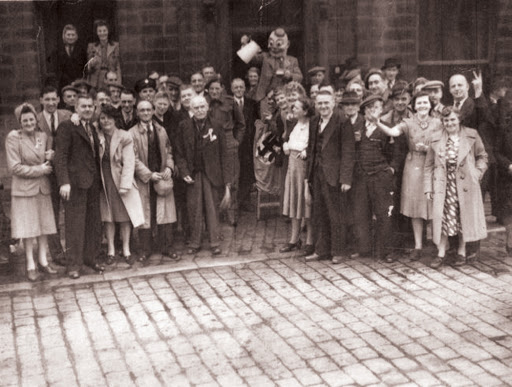
The 1940s in Haworth has shown us the full gamut of life and emotions; we’ve seen the community gathering together to honour the old traditions, great heroism and terrible tragedies. Talking of tragedies, this week has also marked the 173rd anniversary of the death of Branwell Brontë – the start of a terrible nine month period which would also see the passing of Emily and Anne from the same cause: tuberculosis.
On a happier note, do you remember Ida Hacker, the Haworth-born woman who helped save hundreds of lives after an air raid in Westminster? Here’s a little more information on her along with a charming photo that could have come from this year’s 1940s weekend. It seems that she and her husband were the first ever married couple to receive a pair of British Empire Medals!
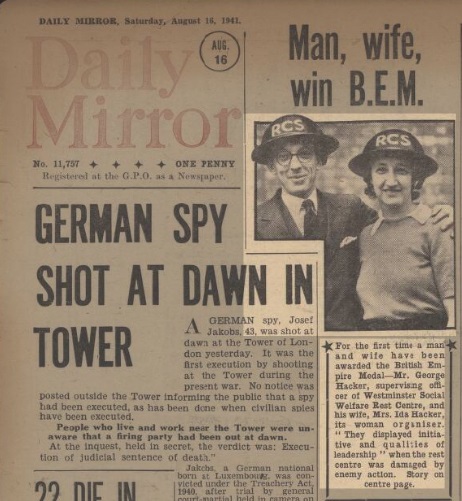
I hope to see you next week for another new Brontë blog post, until then keep the home fire’s burning and remember – walls have ears! Right, I’m off to practise my jitterbug ready for next year.
